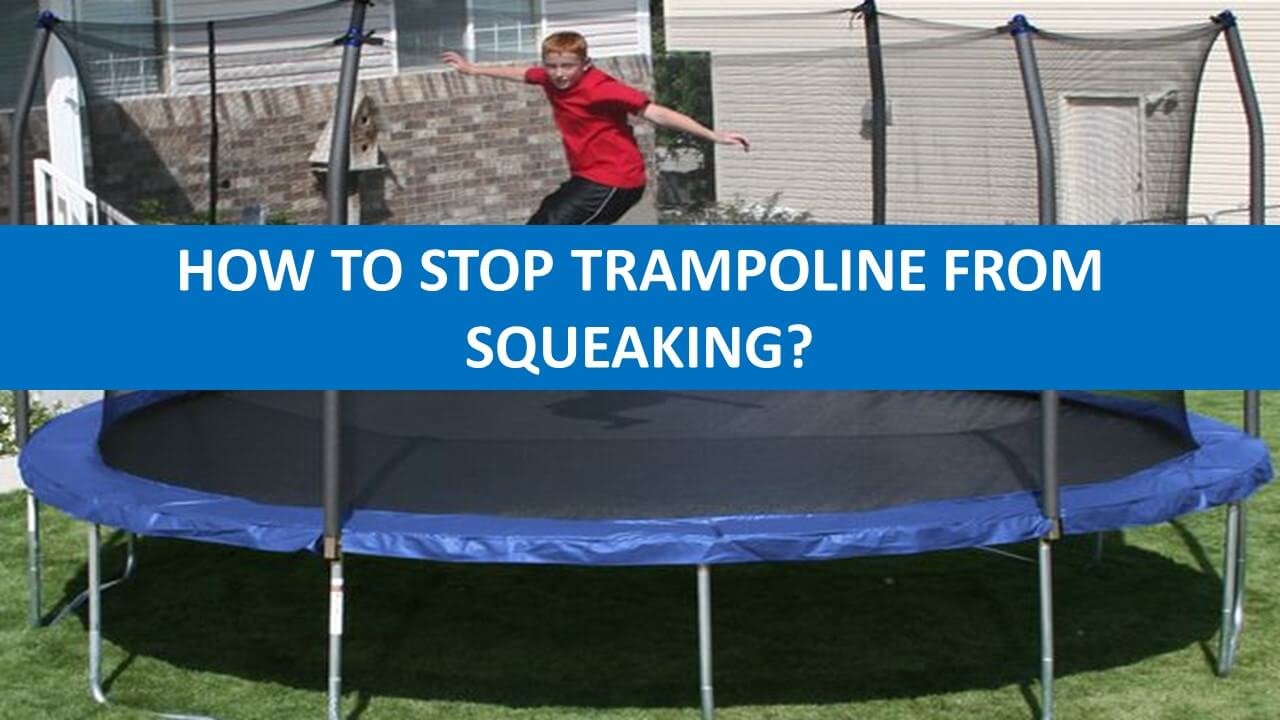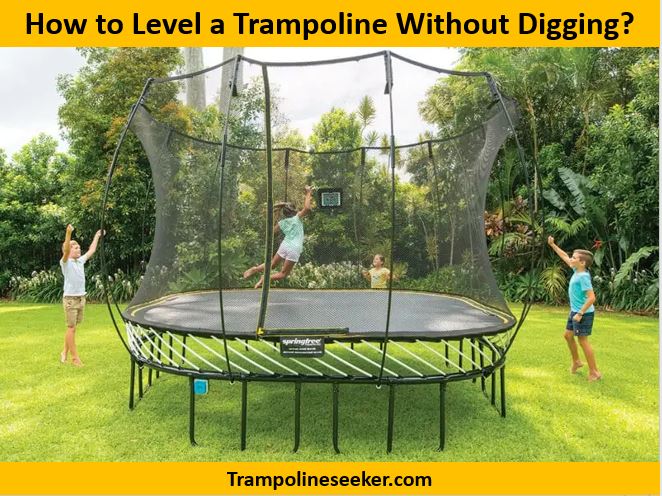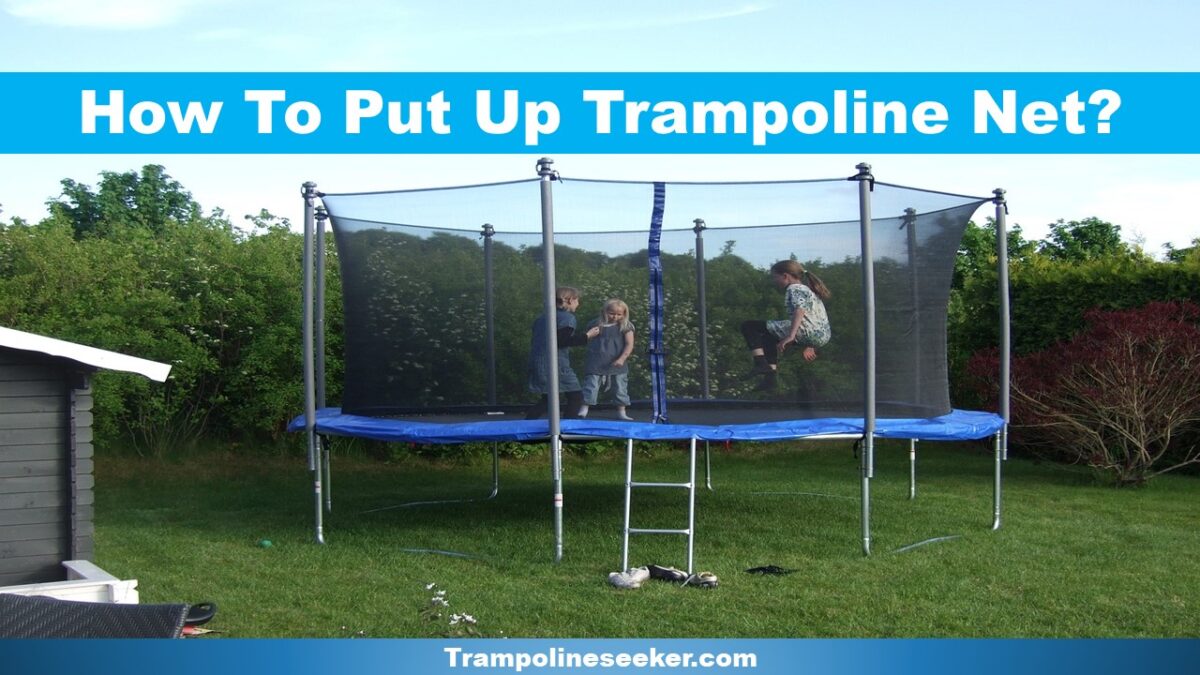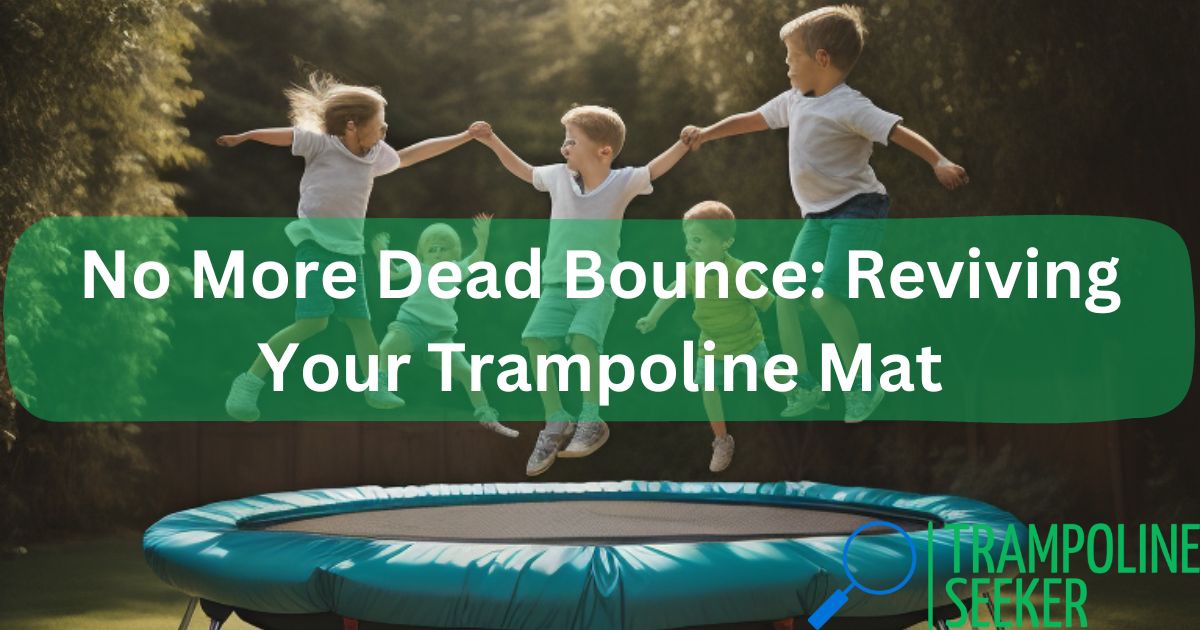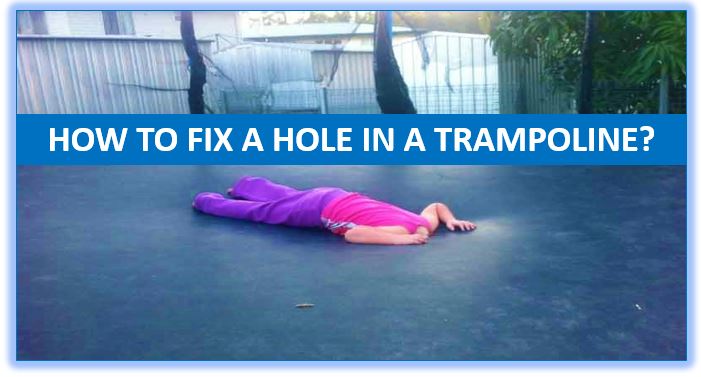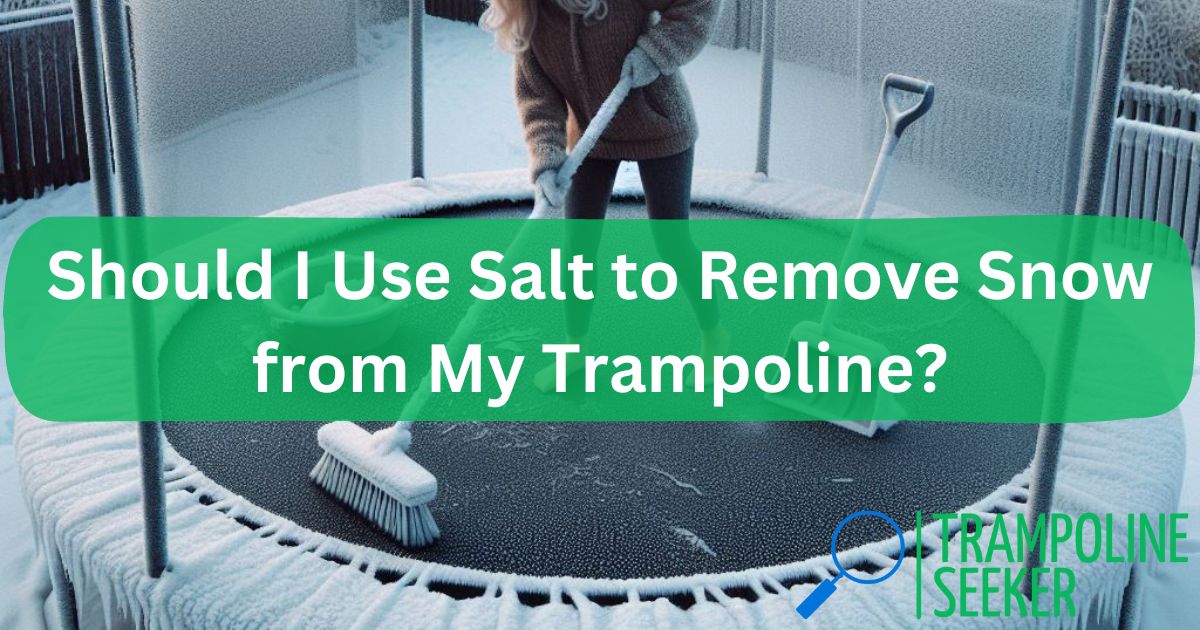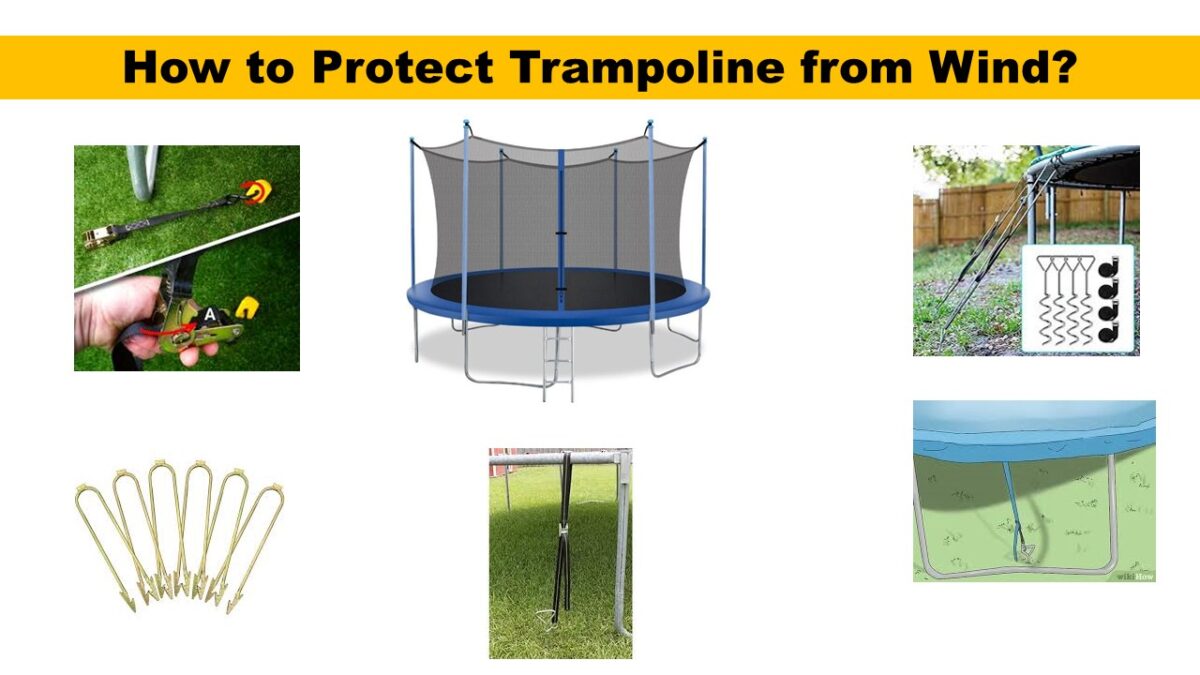I recently acquired a used trampoline frame where the welds on the T-bars connecting the legs to the ring were tearing. As an avid trampoline enthusiast, I started brainstorming solutions so I could keep using this trampoline despite its damaged legs. After some creative thinking, I devised an inexpensive makeshift fix using common household items.
Assessing the Trampoline’s Condition

Upon inspection, the leg welds on my trampoline frame were cracked and beginning to give way. While the main ring remained sturdy, it was clear the legs would soon detach if I kept using the trampoline normally. However, I did not want to give up on this frame. So I removed all of the legs, leaving just the stub ends of the T-bars still attached to the ring.
My Ingenious Solution
With the legs removed, I needed some way to stabilize the ring near the ground. My solution utilizes plastic barrels, ratchet straps, and water to create improvised leg stands. For each T-bar stub, I drilled drainage holes into a plastic barrel six inches from the top. I removed one bung and positioned the barrel under the stub. After repeating this for each stub, I filled the barrels with water up to the drainage holes and added four inches of Styrofoam scraps to float on top. Finally, I used ratchet straps anchored into the ground to firmly secure the frame.
How the Makeshift Stands Work
This inventive system works remarkably well to support the weight of the trampoline. The water-filled barrels act as improvised leg stands in place of the damaged tubular steel legs. The barrels do not bend or break under the load. Meanwhile, the floating Styrofoam pads cushion any pressure points and adjust to uneven ground. The straps and anchors prevent sliding or toppling. Together, these components allow safe use of the trampoline despite having bad legs.
Trying Out My Creation
I cautiously tested out my jury-rigged trampoline design before attempting any actual bouncing. Applying my weight to different sections, it felt reassuringly stable and sturdy. When a friend visited, I demonstrated squatting and gentle bouncing to prove the concept. We were both thrilled it held up well, keeping the bed taut. My simple fix seems suitable for light recreational trampoline use, though I would still avoid risky aerial tricks.
Why My Solution Beats Buying Replacement Parts
While new replacement legs are available to order for my trampoline, my makeshift stands cost almost nothing to implement. I already had the spare barrels, foam, straps, and anchors on hand. And rather than waiting days or weeks for shipping, my fix got the trampoline ready to use again within an hour. If the weather or other factors later damage my cobbled-together stands, I can easily repeat the process using whatever equipment I have available.
Future Improvements to My Design
After safely testing out this initial concept, I can envision some potential upgrades to make the system even more robust:
Use Heavier Barrels or Containers
While my light plastic barrels work fine so far, swapping them for heavier 55-gallon steel drums could add stability. These would resist sliding or tipping over better under bouncing forces.
Add Wood or Concrete Reinforcement
Burying wooden posts or concrete in the ground underneath the anchors could provide more resistance to prevent the trampoline from shifting. This would improve safety margins greatly.
Extend the Stub Ends
Adding longer extensions to the remaining T-bar stubs would allow the barrels to situate closer to the bounce area. This could improve stability and balance on the trampoline.
Related Blogs:
- How to Repair Trampoline?
- How to Fix Trampoline Net?
- Why is My Trampoline Mat Loose?
- How To Install A Mat for a New Trampoline?
Conclusion: Innovative Solutions Can Fix Broken Things
Rather than discarding my used trampoline with damaged legs, I leveraged creative thinking and available materials to devise an unorthodox yet effective solution. Now my trampoline can be safely used again, thanks to the improvised leg stand system I designed using plastic barrels, foam pads, straps, and water for ballast. While rudimentary, this fix highlights how some ingenious innovation can overcome limitations when replacement parts or funds are lacking. Moving forward, I welcome the challenge of pushing this design even further. By scavenging nearby “junk” to tackle problems, we can often breathe new life into worn or broken possessions when we apply some creative spirit.
Frequently Asked Questions
Could this method work for other objects besides trampolines?
Yes, the basic concept of using water-filled barrels stabilized by straps could support all kinds of things. For example, a large platform, sculpture, or even a rickety shed could potentially be re-leveled or reinforced this way. The buoyant nature of water balances weight very effectively.
How much weight can this sort of fix hold up?
That depends on several factors – the size and structure of the barrels, how securely they are strapped down, the quality of the surrounding foam and hardware, etc. Approximating, a set of standard 55-gallon plastic drums could likely support 500-1,000 pounds or more if properly braced. Larger metal barrels on a concrete base could withstand much greater loads.
Where else can spare barrels be used for innovative DIY solutions?
Old barrels have many applications as inexpensive raw material. A few ideas: rain collection systems, compost tumblers, livestock feeders, camping wash stations, emergency flood barriers, and even basic boat platforms. With enough barrels and straps, creative problem-solving is possible.
What warnings would you give about safety risks with this repair method?
Using improvised DIY fixes introduces some inherent dangers one should keep in mind. Hazards to note – risk of water leakage/rust over time, straps deteriorating from UV and weather exposure, foam pieces shifting under load. Check regularly for stability and replace aging components when needed. Don’t exceed reasonable weight limits for the barrels. And as always, exercise caution when jumping or bouncing.
Articles You May Like to Read:


